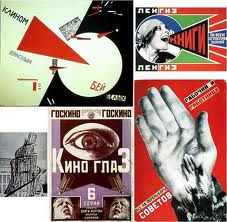Lindsey
Monday, May 14, 2012
Wednesday, May 2, 2012
Monday, April 30, 2012
Wednesday, April 25, 2012
The History of Spray Paint
What: Aerosol Paint, also known as spray paint is a type of paint that is in a pressurized, sealed container and releases in a fine spray mist when depressing a valve button. Spray painting leaves an evenly coated, smooth surface unlike many other kinds of paint. Cans are portable, and easy to store and can be applied directly to bare metal or other plastic surfaces. Speed, portability and and permanence make aerosol paint a common graffiti medium. Spray paint can also be used for many other tasks like, models and miniatures and marking on construction and surveying sites.
Where: The concepts of aerosol probably goes as far back as 1790. The first patent was granted in Olso (Norway) in 1926 to Erik Roheim, a chemical engineer and a United States patent was granted for the invention in 1931. The Norwegian Post Office celebrated the invention by issuing a stamp in 1998.
When: The concept originated as early as 1790 in France. Then in 1837, a soda siphon incorporating a valve was introduced. Metal cans were being tested as early as 1862 but were too bulky to be commercially successful. In 1899, inventors Helbling and Pertsch aerosols pressurized using methyl and ethyl chloride as propellents. In 1949, canned spray paint was invented by Edward Seymour, the first color of paint was aluminum. Then, Seymour's wife bonnie suggested the use of a can filled with paint. Edward Seymour founded Seymour of Sycamore, Inc. of Chicago, USA, to manufacture his spray paints.
How: The concept of aerosol started as early as 1790, when self-pressurized carbonated beverages were introduced in france. A man named Perpigna came up with a soda siphon incorporating a valve. Metal spray cans were being tested as early as 1862. They were constructed from heavy steel and were too bulky to be commercially successful. In 1899, inventors Helbling and Pertch patented aerosols pressurized using methyl and ethyl chloide as propellants. In 1927, Norwegian engineer Erik Rotheim patented the first aerosol can and valve that could hold and dispense products and propellant systems. During World War II the government funded research into a portable way for men in the service to spray malaria-carrying bugs. In 1949, canned spray was invented by Edward Seymour.
Where: The concepts of aerosol probably goes as far back as 1790. The first patent was granted in Olso (Norway) in 1926 to Erik Roheim, a chemical engineer and a United States patent was granted for the invention in 1931. The Norwegian Post Office celebrated the invention by issuing a stamp in 1998.
When: The concept originated as early as 1790 in France. Then in 1837, a soda siphon incorporating a valve was introduced. Metal cans were being tested as early as 1862 but were too bulky to be commercially successful. In 1899, inventors Helbling and Pertsch aerosols pressurized using methyl and ethyl chloride as propellents. In 1949, canned spray paint was invented by Edward Seymour, the first color of paint was aluminum. Then, Seymour's wife bonnie suggested the use of a can filled with paint. Edward Seymour founded Seymour of Sycamore, Inc. of Chicago, USA, to manufacture his spray paints.
How: The concept of aerosol started as early as 1790, when self-pressurized carbonated beverages were introduced in france. A man named Perpigna came up with a soda siphon incorporating a valve. Metal spray cans were being tested as early as 1862. They were constructed from heavy steel and were too bulky to be commercially successful. In 1899, inventors Helbling and Pertch patented aerosols pressurized using methyl and ethyl chloide as propellants. In 1927, Norwegian engineer Erik Rotheim patented the first aerosol can and valve that could hold and dispense products and propellant systems. During World War II the government funded research into a portable way for men in the service to spray malaria-carrying bugs. In 1949, canned spray was invented by Edward Seymour.
Monday, April 23, 2012
Art Movements
Art Deco
-Uses geometric designs
-bright, bold colors
-began in Paris in the 1920's and was purely decorative instead of being philosophical or political
Art Nouveau
-decoration and architecture style of the 19th and early 20th centuries
-leaves, flowers
Bauhaus
-combines crafts and fine arts
-founded with the idea of creating a "total work" of art in which all arts, would eventually be brought together
Constructivism
-an artistic and architectural philosophy that originated in Russia beginning in 1919, which was a rejection of the idea of autonomous art
-had great affect of modern art movements of the 20th century, influencing major trends such as Bauhaus and the De Stijl movement
Subscribe to:
Comments (Atom)















